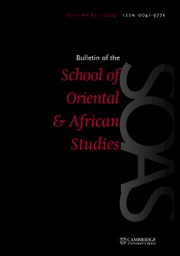Grabowsky has compiled a number of articles relating to manuscripts and inscriptions in the Tai world. These articles represent the work of different scholars, with no set format. This volume includes twelve articles, an introduction, and an index. Thematically, articles are divided into three parts. The first contains chapters relating to scripts and inscription, the second covers literary traditions and literary works, and the third addresses manuscripts in contemporary times. Structurally, there are a few articles which compare manuscripts or inscriptions between regions, indicating cultural contact and the spread of ideas and practices. Some contributors look at specific manuscript editions, comparing language and content. The remaining articles consider groups, periods, or styles among epigraphic and manuscript traditions. Throughout the book, numerous black-and-white photographs of inscriptions and manuscripts provide examples of scripts and languages. The contributions represent papers from two conferences held in 2017, the Thirteenth International Conference on Thai Studies, held at Chiang Mai University, and the “Thirty-third Deutscher Orientalistentag”, held at Friedrich-Schiller-Universität Jena in Germany.
The first part looks at script types and corpora of inscriptions, considering epigraphic cultures and subcultural variants. Michel Lorrillard describes contact between Lan Na and Lan Xang, outlining the distribution and chronology of inscriptions, and points to similarities in content which indicate shared traditions. François Lagirarde presents inscriptions from northern Thailand, focusing on the thirteenth to seventeenth centuries. He describes artefact types and written content, addressing the reasons inscriptions were produced, and provides translations as examples. Peera Panarut describes a type of encoding in Siamese manuscripts. Writing was made cryptic by replacing letters with numbers or other letters to obscure the meaning, decipherable only with knowledge of the encryption method. Manasicha Akepiyapornchai and Peera Panarut describe the Siamese Grantha script, used for Brahmanical ritual manuscripts, which was derived from the Grantha script of South India.
The second part covers the content of Tai manuscripts, including Buddhist prayers, monastic rituals, and literary works reflecting Buddhist teachings. Silpsupa Jaengsawang describes Anisong manuscripts, recited during the Bun Phawet festival at temples in Laos and Thailand. Bonnie Brereton presents a category of mulberry-paper manuscripts from Thailand. Some pages have illustrations, and she argues that certain depictions from the Phra Malai story thought to represent “naughty monks” have been mischaracterized. Jana Igunma describes the San Sinchai story, popular in Thai literature since the Ayutthaya period, explaining how Thai versions were based on a Laos version which was derived from the Lan Na iteration. Sutheera Satayaphan discusses Lakhòn Nòk Thai theatrical drama, intended for public audiences rather than the royal court.
The third part deals with efforts to archive manuscript collections and promote preservation. Phibul Choompolpaisal overviews manuscript studies and archival work among various Thai and international collections. Volker Grabowsky identifies a shared tradition within manuscript cultures, describing Nan, in northern Thailand, as a notable political and cultural entity in contact with Luang Prabang. Achariya Choowonglert describes Tai communities in Vietnam, where political changes over the last century led to repressive policies towards ethnic minorities, but following a recent reversal, the government now supports preservation of traditional cultures. Roger Casas describes the To Tham script ‒ a style of writing in the region Sipsong Panna, southern China. Efforts have been made to promote this script as part of local identity, but these efforts have been hampered by the fact this script was traditionally used for religious texts.
A few articles stood out as particularly thought-provoking. The Siamese Grantha script, described by Akepiyapornchai and Panarut, is a style of writing not commonly mentioned even among Thai scholars of inscriptions and manuscripts. This is probably due to the fact this script was intended for exclusive use by royal priests, so it was not widely taught and few texts were produced using it. Lorrillard raises an interesting point about the use of inscriptions as a tool for institutional authority and how the spread of the practice of creating inscriptions would fail to take hold in places where social conditions were not ripe. Scholars frequently build arguments based on locations where inscriptions are found, but infrequently consider locations where inscriptions are not found or implications of sites where inscriptions are found in only limited numbers.
Brereton's article is controversial, as she challenges Western scholars for the misinterpretation of illustrated depictions in manuscripts, arguing they neglected to contextualize the content of the story or the purpose of the manuscripts, and that they disregarded the work of Thai scholars. Choowonglert's article on Tai minority communities in Vietnam is likewise engaging. Although the article deals specifically with Tai populations, it raises some challenging questions concerning ethnic identity, empowerment, and governmental control. The shift from repressive government policies to the promotion of ethnic identities among minority groups can create a sense of empowerment for repressed peoples, but the reproduction of a group's history means authorities can influence local perceptions about how a community views itself, its history, and how its community fits within the larger society.
This volume is a welcome contribution to the study of languages and ancient documents in Mainland Southeast Asia. It is lacking in that certain documentary traditions in the Tai world are not represented. For instance, there are no chapters presenting inscriptions of Sukhothai or Ayutthaya, nor manuscript traditions in the Shan state of Burma. But this volume was not intended as a comprehensive overview of Tai manuscript traditions. Inscription and manuscript studies are still widely under-represented in academic works, which is confounding considering the quantities held in various collections. As such, this volume will serve as another valuable resource for scholars seeking information and discussions on specific topics relating to Tai dialects, ancient textual sources, and traditional literary cultures in Mainland Southeast Asia.



